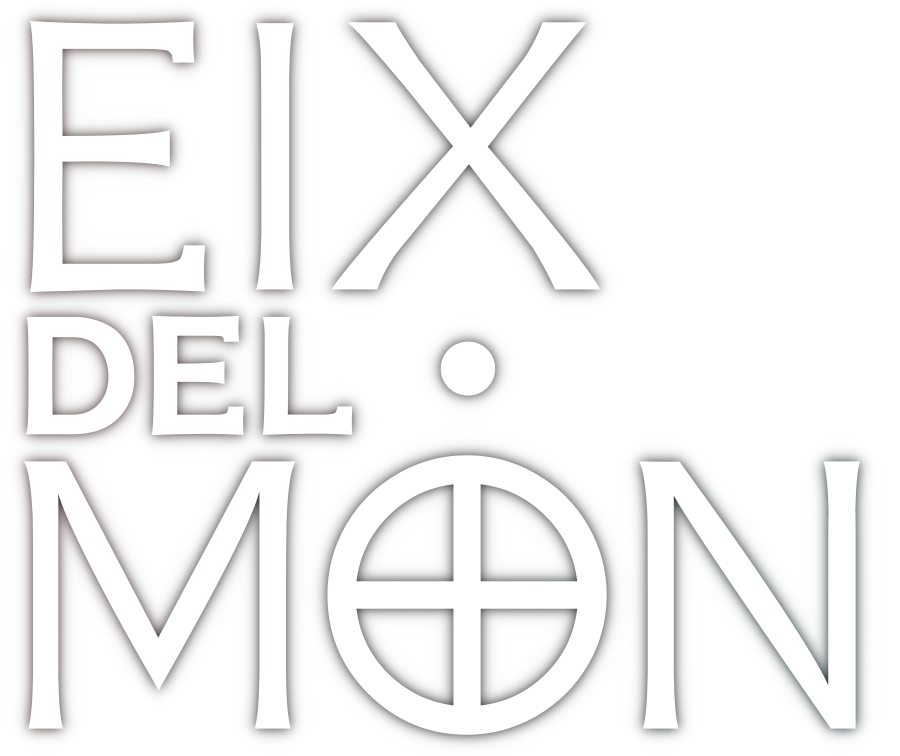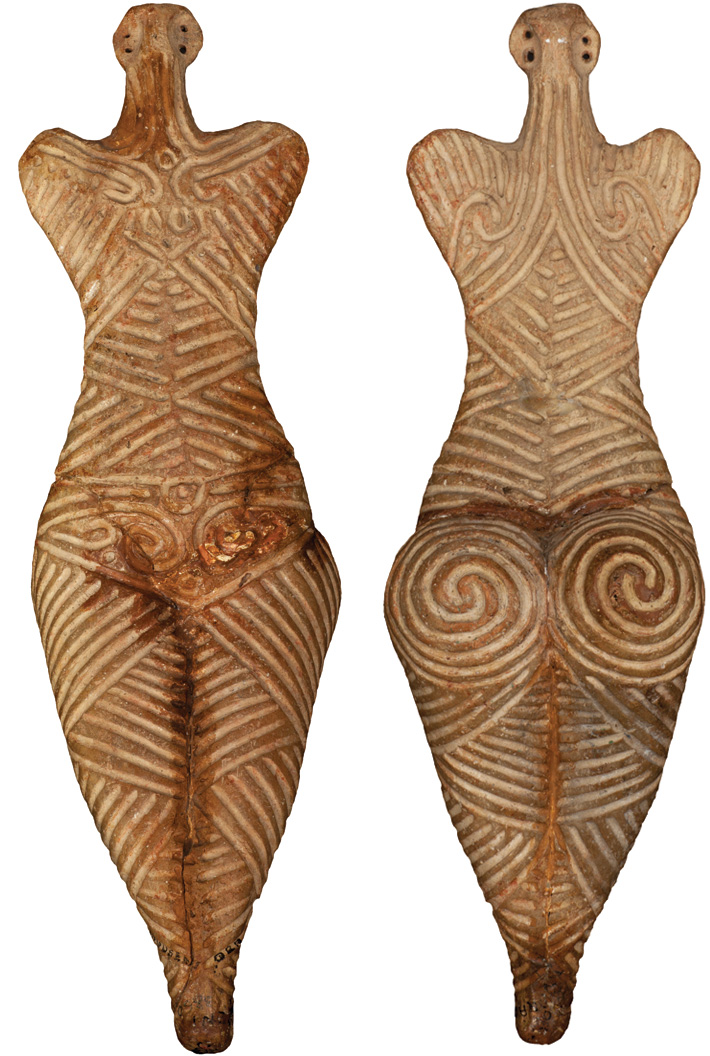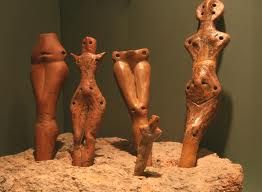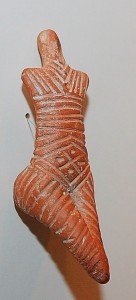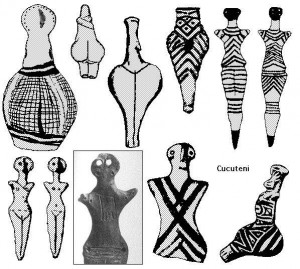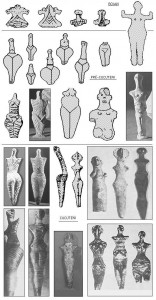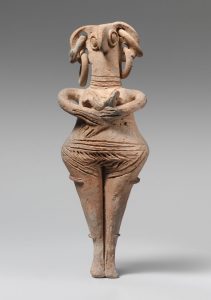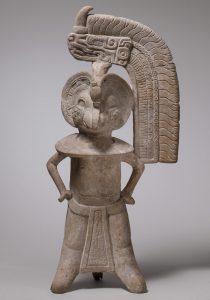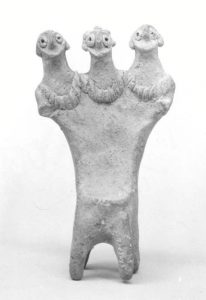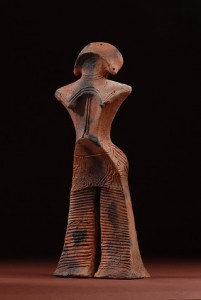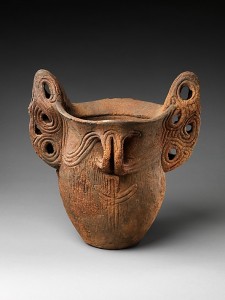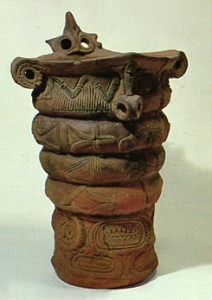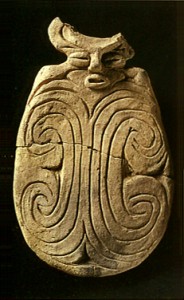Cucuteni Figurines (Romania). © Marius Amarie via archaeology.org.
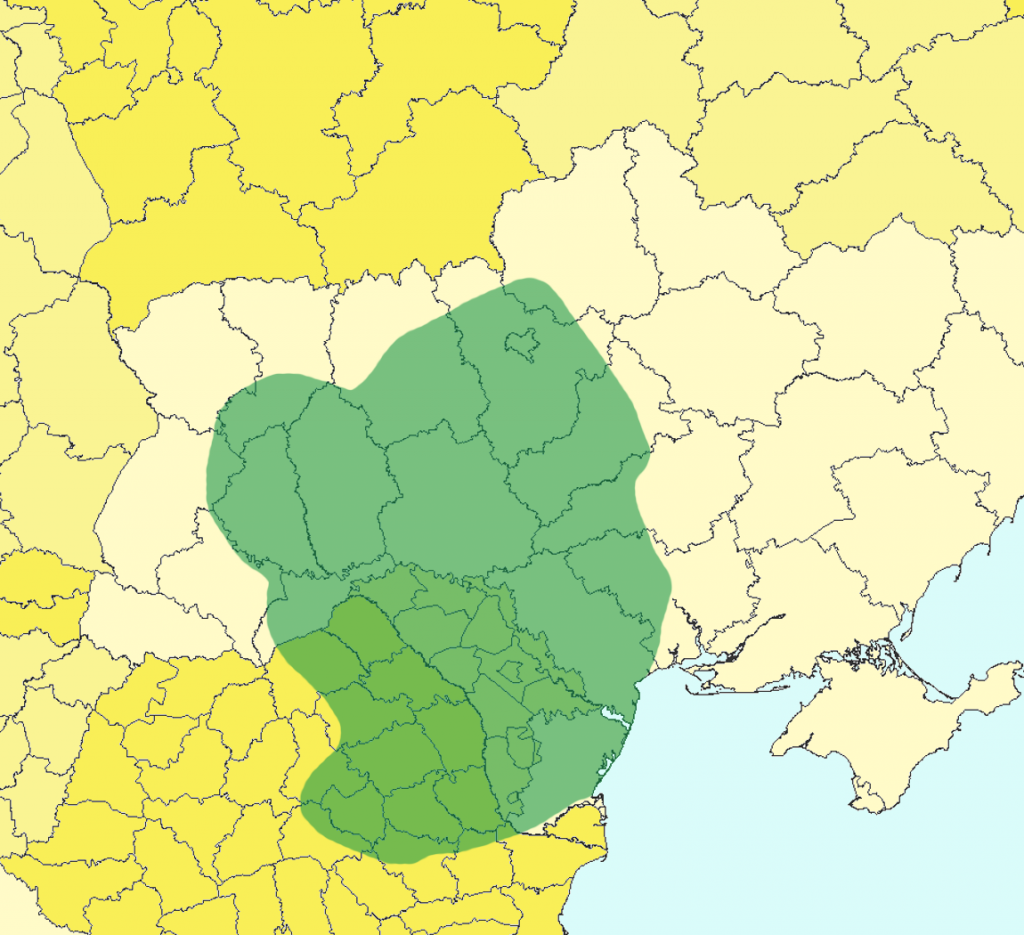
The maximal extent of settlements associated with the Cucuteni-Tripol’ye archaeological complex during all periods (c. 4800-3000 BC).
Also shown are modern provincial borders, illustrating how the territory covers all of Moldova plus parts of Ukraine and Romania. Original description by uploader: “It is drawn from a n=2600 dataset of Cucuteni-Tripol’ye sites, identical to the data shown in the maps published in Manzura 2005 (“Steps to the Steppe”), if you’d like to read an article that addresses some of these large-scale spatial issues.”
Igor Manzura, “Steps to the Steppe: Or, How the North Pontic Region was Colonized,” Oxford Journal of Archaeology XXIv.4 (2005), pp. 313–338. CC BY-SA via Wikimedia Commons.
More from the article:
They, and many other figurines like them—such as the one pictured at right—were made by a people we know today as the Cucuteni culture, which lasted from 4800 to 3000 B.C. in what is now Romania and Ukraine. Some scholars have interpreted these lines as representations of body modification. “They could be tattoos,” says San Francisco State University archaeologist Douglass W. Bailey. “Some say they are clothes, or they could represent something else we don’t understand. We will never know for sure, but in a sense, that’s unimportant. What’s important is that they were using the surface of their bodies to communicate ideas, whether they related to membership in a group or individual identity.”
This 722-page manography has a lot of information on the Cucuteni culture. Statuette pictures begin at page 610. Their “heads” have either one or two pairs of “eyes”, and they can be small or big in relation to the body.
- M. Petrescu-Dîmboviţa and M. C. Văleanu, Cucuteni-Ceţăţuie : săpăturile din anii 1961-1966 : monografie arheologică, Piatra Neamţ Ed. Consantin Matasă.
[Bibtex]@Book{2004PetrescuDimbovitaMValeanuMCCucuteniCetatuie9737777018, author = {Petrescu-Dîmboviţa, Mircea and Văleanu, Mădălin Cornel}, title = {Cucuteni-Ceţăţuie : săpăturile din anii 1961-1966 : monografie arheologică}, date = {2004}, publisher = {Piatra Neamţ Ed. Consantin Matasă}, url = {http://archive.org/details/2004PetrescuDimbovitaM.ValeanuM.C.CucuteniCetatuie9737777018}, urldate = {2016-08-03}, abstract = {Book about eponim settlement of Cucuteni Culture; Zsfassung in franz. Sprache}, file = {2004PetrescuDimbovitaMValeanuMCCucuteniCetatuie9737777018.pdf:media/trismegisto/Vitamin/Documents/Bibliography/2004PetrescuDimbovitaMValeanuMCCucuteniCetatuie9737777018.pdf:PDF}, keywords = {Cucuteni Culture}, owner = {trismegisto}, rights = {http://creativecommons.org/publicdomain/mark/1.0/}, shorttitle = {Cucuteni-Ceţăţuie}, timestamp = {2016-08-03}, }
The head seems somewhat familiar:
